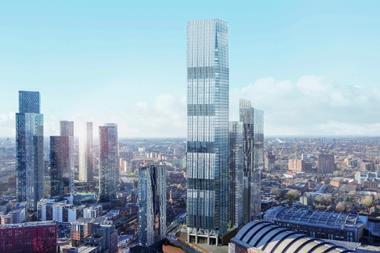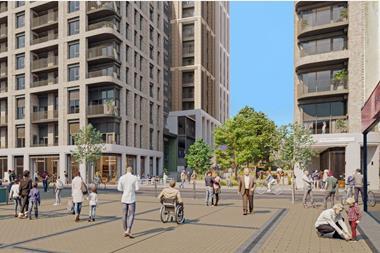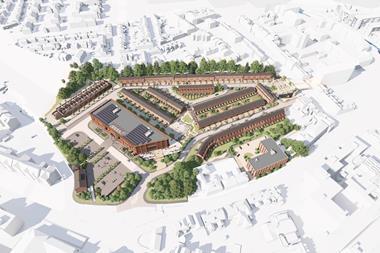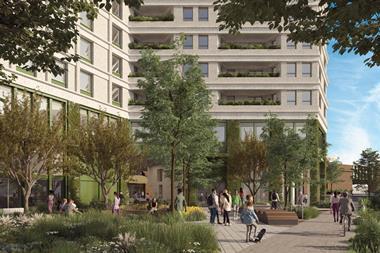A pivotal element to achieving the Paris Agreement objectives to reduce carbon emissions and mitigate the impacts of climate change is decarbonisation of the built environment, a responsibility everyone shares.

After fossil fuels, real estate is the second-largest contributor of carbon emissions globally, accounting for 37%, with managed and occupied real estate alone contributing a massive 27%. And with 85% of existing buildings in Europe still expected to exist in 2050, the situation is further compounded by many of them being energy-inefficient and unsustainable.
While both tenants and landlords proactively address their own energy use and carbon emissions, progress on the decarbonisation of real estate is being held back by a lack of understanding and collaboration between property owners and occupiers, which implies a risk of increasing total emissions from the built environment over the medium to long term, as real estate decisions are often medium- to long-term commitments.
There are often ‘missed connections’ between both parties where a lack of understanding on broader decarbonisation goals or an absence of common language is holding back progress. With many occupiers often more focused on emissions from other aspects of their businesses, such as manufacturing or supply chains, the contribution that buildings make to the total global emissions from real estate, including operational and embodied carbon, can be underestimated.
Two years ago, at the beginning of the Urban Land Institute’s (ULI’s) C Change programme to mobilise the industry to accelerate the decarbonisation of real estate, the issue of tenant and landlord alignment was identified as one of the key bottlenecks and has provided a major impetus in terms of research and engagement.
In response, C Change commissioned research from an occupier perspective on real estate and decarbonisation strategies to explore this challenge, to identify the barriers to achieving owner and occupier engagement, and most importantly to examine what the next steps need to be in terms of action to align the interests of landlords and occupiers.
Clearly, a deeper understanding from both sides on how decarbonisation is being approached by each party was required, as well as examination of each stakeholder’s working practices and structures.
Barriers to constructive collaboration may be related to factors such as historic relationships that are ‘transactional’ in nature, variations in decarbonisation objectives and perspectives and longstanding approaches to areas such as lease structures, contracts and fit-outs.
Barriers also include occupiers not factoring in embodied carbon emissions when selecting new space to lease, but instead narrowly focusing on measuring the direct and indirect emissions generated through a company’s activities and the operation of real estate (Greenhouse Gas [GHG] Protocol scopes 1, 2 and/or 3). As such, new-build, operationally net zero properties may be preferred, yet total carbon emissions may exceed those of a retrofitted building.
Decision making around new build versus existing real estate would be better informed if a more holistic approach towards total lifecycle emissions and wider environmental considerations was taken that factors in embodied carbon.
At a more tactical level, the mechanics of lease contracts, including renewals and extensions, can also be a factor. Currently, there’s no standard due diligence questionnaire used by occupiers when searching for space, there’s no standardised green lease in use and unfortunately green lease clauses are sometimes sacrificed early in negotiations.
Tenants also have the right to leases with matching terms when renewing existing agreements, and there’s little incentive to incorporate specific environmental, social and governance (ESG) considerations in lease renewals if they risk triggering a potentially costly or disadvantageous renegotiation of lease terms.
To help resolve the issues and barriers, the solutions proposed include the need for more consistent practices, such as for standard heads of terms to incorporate ESG considerations with minimum requirements considered non-negotiable, and a more standardised approach to due diligence when occupiers are seeking space.
Such changes will require both the education of all stakeholders and industry-wide commitment.
However, fundamentally, meaningful progress on tackling carbon emissions and addressing decarbonisation will not be made unless we can engender more open and transparent partnerships to help align interests.
Both owners and occupiers need to build trusted, long-term relationships that recognise their respective objectives. This requires both parties to be transparent and clear on their perspectives and the wider concerns each stakeholder faces.
Ultimately, by aligning landlord and tenant goals on decarbonisation, the real estate industry will be better able to tackle its Scope 3 emissions from occupied space, one of the largest components of global carbon emissions for the built environment.
Lisette van Doorn is chief executive of ULI Europe





























No comments yet